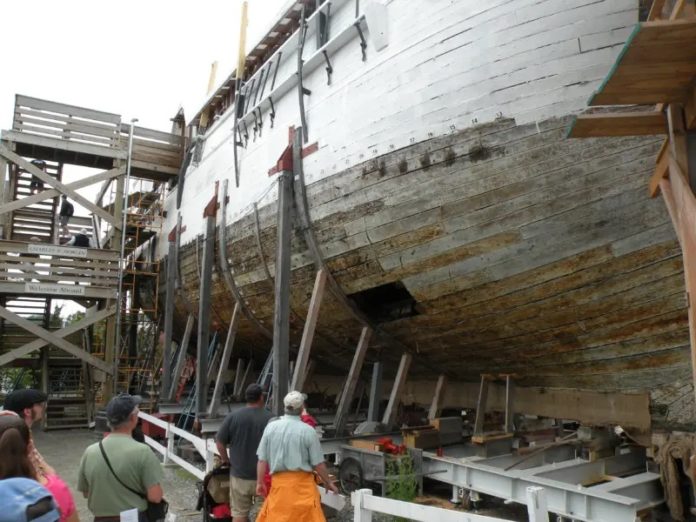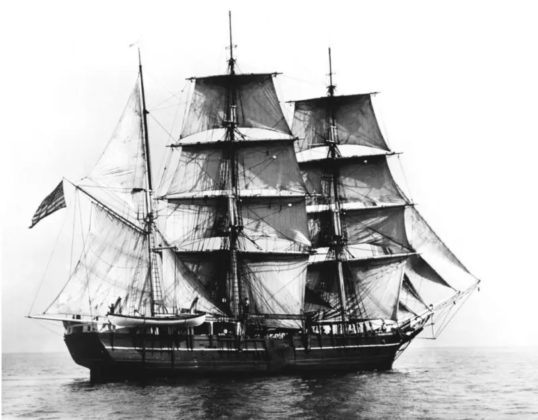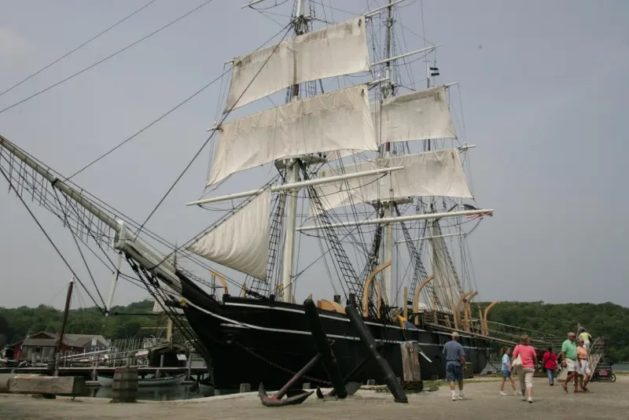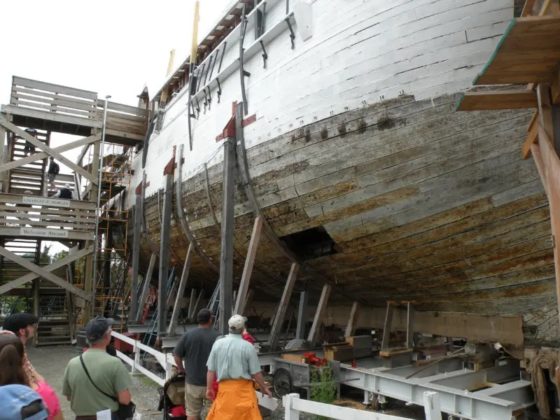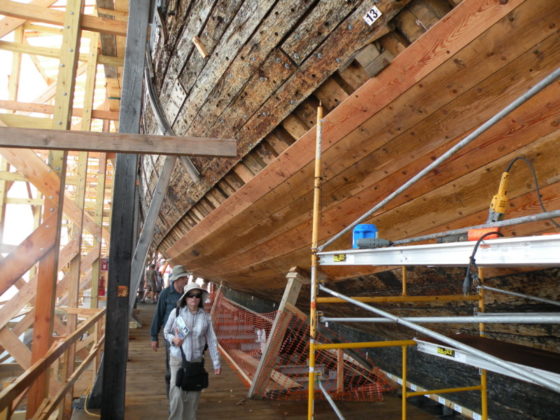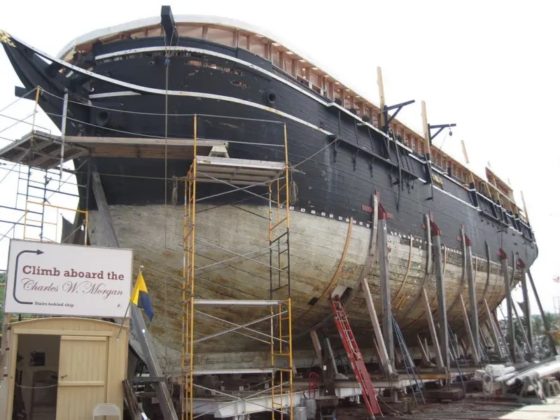Charles W. Morgan: The Last Wooden Whaling Ship
Standing on the wide sweep of the Charles W. Morgan’s deck and staring up at her forest of rigging towering overhead one can imagine sailing across the oceans of the world on this ship. She was the last of a great fleet of 2,700 Yankee whaleships that circled the earth in search of whales. Lisa Saunders, author of The Mystic Seafarers Trail named the Charles W. Morgan one of the seven wonders of mystic and indeed, she is one of the must-sees when you visit Mystic.
The Morgan was named after her owner Charles W. Morgan, a businessman, and banker, who owned a fleet of 14 whaling ships. The whaleship was launched in New Bedford, MA. on July 21, 1841, and is the oldest square-rigged American merchant vessel afloat. The ship measures 106 feet 11 inches in length on deck with her beam measuring 27 feet 9 inches. The top of her mast is 110 feet above the deck. When fully-rigged she carries 7,134 square feet of sail. In 1966 the Morgan was declared a National Historic Landmark.
The Morgan was known as a lucky ship because she always returned a profit regardless of rough seas, storms, or cannibals. The ship’s maiden voyage began on September 6, 1841, with a journey around Cape Horn and across the Pacific Ocean. Following Morgan’s initial three-year four-month voyage she came home with 1,600 barrels of sperm oil, 800 barrels of whale oil, and 10,000 pounds of baleen (whalebone) which was worth around $56,000, a fortune at the time. During the Civil War, many whaleships were sunk but the Morgan avoided the war by being at sea for most of its duration.
The Morgan sailed with a crew of about 35 during her 80-year career and over 1000 seamen of every nationality crewed on her. Many of her voyages lasted more than three years. In the beginning signing on a crew was easy as many young men saw a financial opportunity in a whaling voyage. Later, during the industrial revolution, crews became difficult to recruit because of the abundance of factory jobs so whaleships sailed with skeleton crews, filling their crew positions with fishermen from the Azores and other ports. These fishermen then brought over their families and established many of New England’s immigrant communities.
The Morgan’s last whaling voyage was in 1921. During her long career, she’d survived being frozen in the ice in the Arctic, attacks by South Sea headhunters, a fire aboard ship, and a host of other calamitous events. She was saved from demolition and became a museum ship for the estate of Col. Edward H. R. Green in South Dartmouth, MA. In 1941 she became a part of the collection of Mystic Seaport Museum.
In May 2014, following a five-year multi-million dollar restoration, the Morgan left the seaport and set out on her 38th voyage. Her new role is in education, helping to bring about awareness of our maritime heritage and of the environmental issues that are now facing our oceans.
Learn more about visiting the Charles W. Morgan at Mystic Seaport.







